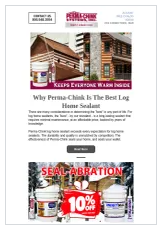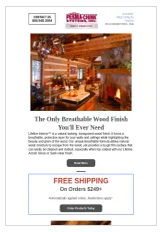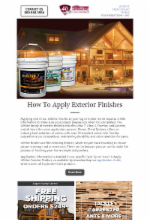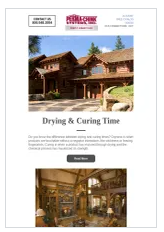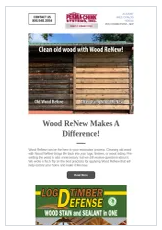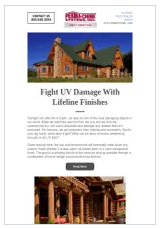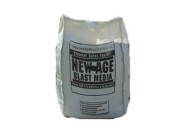 Perma-Chink Systems, Inc
Log & Timber Home Care Experts
Perma-Chink Systems, Inc
Log & Timber Home Care Experts

Michael
Published in
Newsletter
Tagged under
Published in
Newsletter
Tagged under
Published in
Newsletter
Tagged under
Published in
Newsletter
Tagged under
Published in
Newsletter
Tagged under
Published in
Newsletter
Tagged under
Published in
Newsletter
Tagged under
Published in
Newsletter
Tagged under
Published in
Newsletter
Tagged under
Published in
Newsletter
Tagged under
New Age Blast Media Available Sizes
New Age Blast Media Available Sizes
Call 1-800-548-3554 to Order
Features
- Made from recycled glass
- Superior to corn, walnut, sand or soda media
Resource Links
Restoration FAQ
If your log home has an unknown finish, it's best to take it down to bare wood. If you know that it's been finished with Perma-Chink Systems products, you can clean and reapply finish or topcoat. For the best products to use, read this.
We have the perfect solution for repairing log rot in wood with our E-Wood and M-Balm products. Read more here.
Dark or discolored log homes can mean a couple of things. One is it's dirty and a thorough cleaning will bring back the original look. Another is the wrong finish was applied and it's covered in mold, mildew, and other stains. Restoration steps begin here.
Restoration Reviews
Our contractor used the Strip-It product on the log home that we recently purchased. He used an airless sprayer and then pressure washed the home. It did a great job of removing the dark paint on it. Soon, we will be applying your Ultra-2 stain and Advance topcoat. We couldn't be more pleased with how our project is going so far, so thank you Perma-Chink!
Myra
We received your samples of S-100 and Strip-It to try on our logs. Strip-It worked the best as our finish remover. We were able to leave it on overnight and we used a pressure washer to remove the old finish the next day. Now we are continuing the restoration process and are planning on using more products from Perma-Chink Systems.
Roosevelt
I found this product to be fairly easy to work with. Our home had a couple of places where animals had chewed on the logs in the past, so we wanted to fill in those areas. We cleaned those areas up, then applied a little M-Balm, and then put the E-Wood right on top of it. We had to sand it down a little, but it does look pretty good so far. We are going to stain over it soon.
Cecily
As a log home restoration company, E-Wood is used in many applications for restoration. We use it on broken or cracked wood, and fill in where knots have fallen out of pine boards. It is easy to use: Mix equal parts with your hands (use gloves), shape and apply to affected area. Let dry, sand and stain. It does not shrink or pull away. It is a good product: Thank you, Perma-Chink!
Stuart


